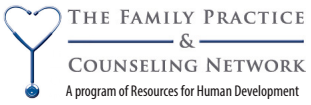I often wonder what my perspective would be if I had never served this year with AmeriCorps. Would I have realized just how important having quality health insurance coverage is for a person’s wellbeing? Would I know how many people are living without this luxury? During my term as a Health and Benefits Advocate at the Family Practice and Counseling Network, I’ve met with hundreds of patients who are underinsured and/or uninsured and who struggle to get healthcare and afford their medications. Generally, people in this situation are there for one of three main reasons: they’re not educated on their options or how to navigate our health system, they can’t afford it, or they’re simply not eligible for anything.
Many of the patients who I work with are actually eligible for health insurance coverage. However, they either didn’t know that they were eligible, did not know how to go about enrolling, were wrongfully told that they were not eligible, or did not have the resources or time to pursue insurance enrollment. In my role, I am largely focused on addressing this disconnect that frustratingly continues to persist to exist. I educate, advocate, and represent the disadvantaged individuals who do not have the time or resources to do this for themselves, and with this, act as a connecting piece between them and their health.
Out of all of our control and in the hands of politicians and big insurance companies, the cost of health insurance and the policies that dictate who is able to get health insurance are the other major barriers. While the Affordable Care Act was a great leap in addressing the gap in insurability, it still left some people out. Furthermore, it didn’t account for the people who had never budgeted for health insurance before. In recent years premium prices have been rising and rising, leaving people who previously had this insurance out of options. Vulnerable populations in particular, such as immigrants, struggle to gain eligibility for healthcare coverage even after legally being here for years. It is always difficult to tell people that they’re not eligible for health insurance or their only option is the expensive plan. However I am at least able to provide them with them with valuable information and offer them resources of where they can get care and medications when uninsured.
What this all boils down to is that there is a percentage of the population that is unable to receive the necessary healthcare that they need. One in five people without healthcare coverage state that they did not see any doctors because of the the cost. Without seeing a medical professional for long periods of time, these patients medical conditions are often exacerbated. Furthermore, these patients will likely concur massive debt if they were to ever become acutely ill or injured and must go to the hospital. These repercussions of being under or uninsured not only negatively affects the individual person’s well-being, but also the healthcare system as a whole. People who are not linked with primary care most likely also don’t take the necessary steps to reduce their risk of being diagnosed with a preventable disease. accounts for 75% of all healthcare spending. This is where I come in. By helping the uninsured get coverage, their ability to consistently seek healthcare is greatly increased. This consistent access to care not only improves the patients’ well-being, but offers the best way to reduce healthcare spending on a nation-wide level.
I feel particularly lucky to be working at a place like the Family Practice and Counseling Network. As a Federally Qualified Health Center we are able to see all patients, regardless of whether or not they are insured or if they have the ability to pay. We act asa true medical home. With primary care, behavioral health, dental, physical therapy, prenatal care, social workers, legal services, a gym, nutrition counseling, mind and body services, a pharmacy and Medication Assisted Treatment for opioid use all under one roof, our patients do not have to go far to get the necessary care that they need. This model of “everything under one roof” is especially beneficial for the low-income population that we primarily serve, who often struggle with affording transportation.
In conclusion, I am grateful to have the opportunity to address these health inequities that contribute to the wellbeing of both the individual and nation one patient at a time, as well as to learn more about the problems that we have in our healthcare system. I hope that one day my service won’t be needed, but until then it is important to continue to provide help and resources to the uninsured population.

